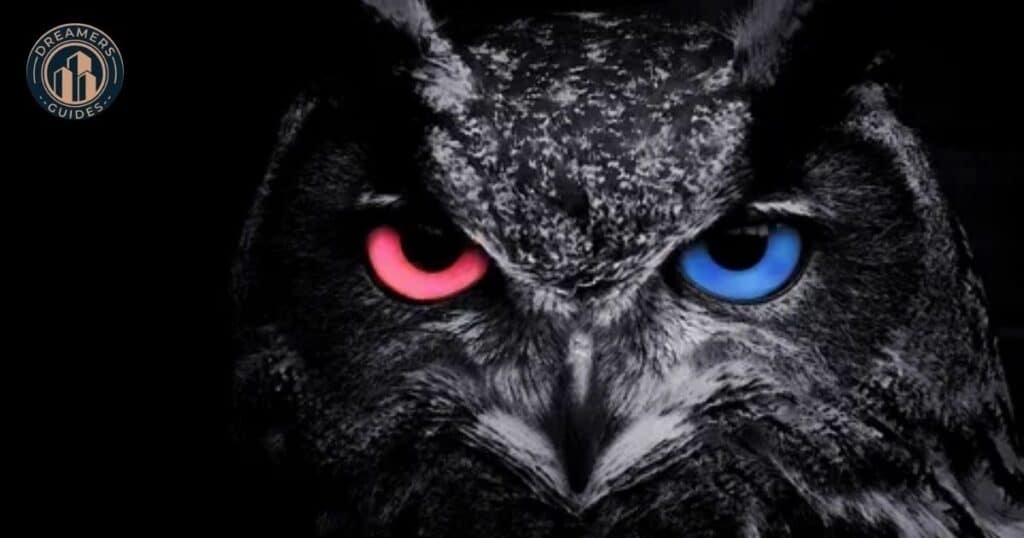Have you ever wondered why owls are seen as wise old birds? Or why elephants are more than just gentle giants? Buckle up, folks! We’re about to embark on a thrilling journey through time and space, exploring the symbols of wisdom that have captivated diverse societies for centuries. From the mysterious nocturnal bird to the patient tortoise, we’ll uncover the hidden meanings behind these icons of sagacity that have shaped our understanding of knowledge and insight.
The Birth of Wittyecho is a story of creativity meeting necessity. Imagine a platform where humor, innovation, and communication blend seamlessly. That’s Wittyecho for you. It emerged from a simple yet profound idea: to make conversations more engaging and fun.
The Universal Quest for Wisdom
Humans have always been on a quest for wisdom. We’ve created emblems of knowledge to represent the elusive concept of sagacity. These wisdom representations aren’t just pretty pictures they’re powerful tools that help us understand and remember complex ideas.
Think about it: when you see an owl, don’t you instantly think “wise”? That’s the power of symbols at work! They’re like shorthand for our brains, packing a whole lot of meaning into a simple image. As we explore these philosophical symbols, we’ll see how different cultures have used them to pass down wisdom through generations.
Decoding the Language of Wisdom
Decoding these symbols is like cracking a secret code. Each culture has its own unique set of wisdom representations, but you’ll be surprised at how many similarities there are across the globe. It’s like we’re all speaking the same language of wisdom, just with different accents!
1. Owl
When it comes to wisdom across history, few creatures can match the owl’s reputation. This nocturnal bird has been Athena’s sidekick, Hogwarts’ postal service, and the star of countless “wise old owl” stories. But why?

Well, for starters, owls have got that whole “eyes wide open” thing going on. Their big, round peepers give them excellent night vision, which our ancestors saw as a sign of keen insight. Plus, they’re quiet observers – always watching, always listening. Sounds pretty wise, right? In Western cultures, the owl has become the go-to symbol of wisdom, often seen perched on books or wearing graduation caps.
From Athena to Harry Potter
Athena’s sacred animal has come a long way from ancient Greece. Today, you’ll find owls everywhere from corporate logos to emoji keyboards. They’re the unofficial mascot of wisdom, knowledge, and late-night study sessions. So next time you’re burning the midnight oil, remember: you’re in good company with these wise night watchers
2. Elephant
Move over, owls there’s a new wise guy in town, and he’s got a trunk! Elephant symbolism is huge (pun intended) when it comes to wisdom, especially in Eastern cultures. These gentle giant creatures are known for their incredible memories, complex social structures, and problem-solving skills.

In Hinduism, the elephant-headed god Ganesha is the patron of wisdom and learning. It’s said that elephants never forget a trait we humans associate with knowledge and experience. Their slow, deliberate movements also give an air of thoughtfulness. It’s like they’re pondering the mysteries of the universe with each step!
Ganesha’s Favorite: Why Hindus Revere the Elephant
Ganesha, with his elephant head, is one of the most beloved deities in Hinduism. He’s the remover of obstacles and the patron of arts and sciences. Talk about a multi-tasker! The elephant’s association with Ganesha has cemented its status as a symbol of wisdom in Indian culture and beyond.
Learn More About : Venus in Scorpio: Man, Woman, Traits, Compatibility
3. Bodhi Tree
Ah, the Bodhi tree where the Buddha sat and said, “Eureka! I’ve got it!” (Okay, maybe not in those exact words.) This sacred fig tree is where Siddhartha Gautama is said to have achieved enlightenment, making it a super important symbol of wisdom in Buddhism.

The Bodhi tree represents the moment when ignorance gives way to understanding. It’s like the ultimate “light bulb moment” in spiritual tree form. Buddhists around the world revere descendants of the original Bodhi tree, seeing them as living links to the Buddha’s enlightenment.
Buddha’s Awakening (The Tree That Changed the World)
The story of the Buddha’s enlightenment under the Bodhi tree has inspired millions. It’s a powerful reminder that wisdom often comes when we’re still and patient, allowing insights to blossom like leaves on a tree. Next time you’re stumped by a problem, maybe try sitting under a tree who knows what brilliant ideas might take root!
4. Book

Books: they’re like little rectangles of wisdom you can carry around! As symbols of wisdom, books are pretty hard to beat. They’ve been representing knowledge and learning since, well, since we started writing things down.
Think about it: books are where we store our collective knowledge, pass down stories, and explore new ideas. They’re like wisdom vending machines – just open one up, and out pops insight! From ancient scrolls to modern e-readers, the book has been a constant companion on humanity’s quest for understanding.
From Scrolls to E-readers : The Evolution of Written Wisdom
| Era | Wisdom Vessel |
| Ancient | Clay tablets, papyrus scrolls |
| Medieval | Handwritten manuscripts |
| Renaissance | Printed books |
| Modern | E-books, digital libraries |
As you can see, the form may change, but the function remains the same: books are our go-to source for historical knowledge and timeless wisdom.
5. Serpent

Snakes have got a bit of a PR problem, thanks to that whole Garden of Eden incident. But in many cultures, the serpent significance goes way beyond temptation. These slithery creatures are often associated with wisdom, transformation, and healing.
In ancient Egypt, the cobra was a symbol of royalty and divine wisdom. The Aztecs had Quetzalcoatl, the feathered serpent god of wisdom and knowledge. Even in the Bible, Jesus advised his followers to be “wise as serpents.” It seems our forked-tongued friends have quite the reputation for ophidian wisdom.
Beyond Eden
Snakes shed their skin, symbolizing renewal and transformation – key aspects of gaining wisdom. Their ability to move between worlds (slithering on land and swimming in water) has made them symbols of hidden knowledge and the mysteries of life and death. So next time you see a snake, don’t just think “Eek!” think “Ooh, wisdom!”
6. Fox
Ah, the fox nature’s own clever creature! This cunning animal has been outsmarting farmers and starring in fables for centuries. But is the fox just a trickster, or is there more to its vulpine wisdom?

In many cultures, the fox represents intelligence, adaptability, and quick thinking – all key components of wisdom. Sure, they might use these skills for some sneaky shenanigans, but hey, sometimes wisdom means knowing how to get out of a tight spot! From Aesop’s fables to Native American legends, the fox has earned its reputation as a clever problem-solver.
Reynard’s Legacy
Remember Reynard the Fox? This medieval trickster became so popular that “renard” is now the French word for fox! Reynard’s tales show that wisdom isn’t always about book learning – sometimes it’s about street smarts and thinking on your feet. The fox reminds us that true wisdom often comes from real-world experience and adaptability.
7. Lotus Flower
The lotus flower is like the overachiever of the plant world. It grows in muddy waters but emerges pristine and beautiful. No wonder it’s such a powerful symbol of wisdom and enlightenment, especially in Eastern philosophies!

In Buddhism, the lotus represents the purity of body, speech, and mind. It’s a reminder that we can rise above the muck of ignorance and achieve wisdom. The lotus’s journey from the mud to the surface mirrors our own path to enlightenment – it might be messy, but the result is beautiful.
Read More About : Goat Symbolism & Meaning: The Ultimate Guide
Blooming Buddhas
Did you know that different colored lotuses have different meanings? Here’s a quick rundown:
- White lotus: Purity and spiritual perfection
- Pink lotus: The Buddha and the history of Buddhism
- Blue lotus: Wisdom, knowledge, and victory over the senses
- Red lotus: Love, compassion, and all matters of the heart
So next time you see a lotus, remember: it’s not just a pretty flower, it’s a whole lesson in wisdom and spiritual growth!
8. Tortoise

The tortoise might not be winning any races (except against that one overconfident hare), but when it comes to symbols of wisdom, this slow-moving reptile is a champion. With its long lifespan and unhurried pace, the tortoise represents patience, longevity, and the kind of wisdom that comes with age.
In many cultures, the tortoise is seen as a symbol of the cosmos. Its domed shell represents the heavens, while its flat underside represents the earth. This cosmic connection has made the tortoise a symbol of universal knowledge and understanding. Plus, have you seen how chill tortoises are? That’s some zen-master level wisdom right there!
Shell Games
In ancient China, tortoise shells were used for divination. People would heat the shells and interpret the cracks to foretell the future. Talk about shell shock! This practice, known as plastromancy, shows just how deeply the tortoise was associated with hidden knowledge and wisdom.
9. Yin Yang

The yin yang symbol is like the ultimate cosmic dance move. This swirling circle of black and white represents the balance of opposing forces in the universe. It’s a visual reminder that wisdom often lies in finding harmony between extremes.
In Chinese philosophy, yin and yang represent complementary forces: dark and light, feminine and masculine, passive and active. The symbol shows that these forces are interconnected – there’s a bit of yin in yang, and vice versa. It’s a powerful reminder that true wisdom comes from understanding both sides of any situation.
Beyond Black and White
The yin-yang isn’t just about opposites – it’s about the dynamic interplay between different forces. It teaches us that wisdom isn’t always about choosing one side or the other, but about finding balance and recognizing the value in both. Next time you’re faced with a tough decision, channel your inner yin-yang and look for the harmony!
10.Wolf
Wolves have got this whole wisdom thing down pat. They’re social animals with a strong pack mentality, but they’re also capable of surviving on their own as “lone wolves.” This duality has made them powerful symbols of wisdom in many cultures.

Native American traditions often view the wolf as a teacher or pathfinder. Their keen senses, strong family bonds, and ability to work together have inspired humans for centuries. Wolves remind us that wisdom can come from both community knowledge and individual experience.
Howling at the Moon
Wolves have a lot to teach us about leadership and cooperation. The alpha wolf isn’t always the strongest or most aggressive – often, it’s the one who’s best at keeping the pack together. That’s a pretty wise approach to leadership, don’t you think? Maybe we should all take a page from the wolf’s playbook and focus on teamwork and communication.
Read More About : Scorpion Symbolism in Cultures and Arts Around The World
In conclusion, these symbols of wisdom from various civilizations show us that sagacity comes in many forms. From the watchful owl to the balanced yin-yang, each symbol offers a unique perspective on what it means to be wise. So, which wisdom representation speaks to you? Are you more of an elephant, never forgetting a lesson learned? Or perhaps you’re like the lotus, rising above challenges to bloom with newfound knowledge?
Remember, wisdom isn’t just about knowing facts – it’s about understanding, balance, and growth. These symbols are like signposts on our journey to becoming wiser, reminding us that true sagacity is a lifelong quest. So keep your eyes open, your mind curious, and who knows? You might just find wisdom in the most unexpected places.